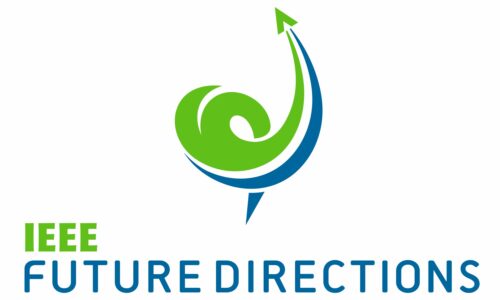TITLE: Designing Digital Tools for ADRDs that Double as Assessments and Interventions ABSTRACT: The world's population is aging, and the increasing number of older adults with Alzheimer's disease and related dementias (ADRDs) is a challenge our society must address. New modes of technology offer unprecedented opportunities to address some of the needs that accompany cognitive decline by providing automated health assessment and memory interventions. In this work, we create EMMA, a memory management app, that combines the two capabilities. Through participatory design with older adults and caregivers, we design an app that is accessible and effective as a compensatory aid...
Read More
Ioannina, Greece, September 27-30, 2022
Conference
IEEE BHI-BSN2022
IEEE-EMBS INTERNATIONAL CONFERENCE ON BIOMEDICAL AND HEALTH INFORMATICS (BHI’22) JOINTLY ORGANISED WITH THE 17TH IEEE-EMBS INTERNATIONAL CONFERENCE ON WEARABLE AND IMPLANTABLE BODY SENSOR NETWORKS (BSN’22)
Days
Hours
Minutes
Seconds
Acceptance rate 2022: 30.2% for BHI.
Announcements

Dear Conference Participants,
Due to the bad weather conditions in Ioannina on Tuesday, the Welcome Reception will NOT be held at the Venue Restaurant – Swimming Pool. The new location is CAFE BISTROT LA BUVETTE, which is located next to the bar of Hotel du Lac.
For more information please visit the following link:
We are looking forward to meeting you tomorrow!
The use of masks in the conference rooms is mandatory
Before entering the sessions please check in at the registration desk which is at the conference center!
Registration all inclusive: conference material, coffee-breaks, lunches, welcome reception, dinner & social event
Accomodation
Virtual Sessions
Some of the IEEE BHI – BSN 2022 Sessions will be organised virtually for those participants who are coming from countries with COVID restrictions, and the travel to Ioannina is for the moment difficult.
Keynote Speakers
Prof. Min Chen, Huazhong University of Science and Technology, China
TITLE: Near-human Sensing in Fabric Smart Space ABSTRACT:In future network, the provisioning of ultra-low latency, non-intrusive and immersive service experience creates various challenges, among which near-human sensing is of great importance to obtain multi-modal information without disturbing user. This talk introduces the development of various functional fabrics, which have provided new thoughts for generating novel near-human services interconnected by fabric sensors, body area network, edge cloud and visualization system. In order to embrace digital intelligent world, this talk also presents the fabric smart space empowered by intelligent fabric agents, which gather multidimensional sensory data and interactive information via near-human sensing...
Read More
Prof. Jeffrey Palmer, Massachusetts Institute of Technology Lincoln Laboratory, USA
TITLE: AI-enabled Sensing and Interventions for Global Health. ABSTRACT:The challenges and opportunities to improve the global health cycle are at critical inflection points under the strain of a world-wide pandemic, international conflict, and large-scale environmental disasters. AI-enabled sensing, decision support, and actions can leverage the enormous data generated and consumed through the global health steps of monitoring, diagnosis, intervention, training, prevention, and informing the public. This presentation will discuss how body sensor networks and health informatics platforms can work in concert with population-level and environmental sensing to assess health threat phenomenology, exposure dosimetry, medical intervention efficacy. These advances can be...
Read More
Prof. Roisin M. Owens, University of Cambridge, United Kingdom
TITLE: Bioelectronic tools to study the gut-brain axis. ABSTRACT:Polymeric electroactive materials and devices can bridge the gap between hard inflexible materials used for physical transducers and soft, compliant biological tissues. An additional advantage of these electronic materials is their flexibility for processing and fabrication in a wide range of formats. In this presentation, I will discuss our recent progress generating 3D conducting polymer devices, to simultaneously host and monitor complex multi-cellular models of tissues and organs. Electrophysiological recording of parameters such as tissue impedance, epithelial and endothelial barrier tissue integrity and neuronal activity, are all made possible thanks to the...
Read More
Prof. Dinggang Shen, Shanghaitech University, China
TITLE: Deep Learning based Medical Image Reconstruction ABSTRACT: This talk will introduce various deep learning methods we developed for fast MR acquisition, low-dose CT reconstruction, and low-cost and low-dose PET acquisition. The implementation of these techniques in scanners for real clinical applications will be demonstrated. Also, comparisons with state-of-the-art acquisition methods will be discussed.
Read More
Prof. Riccardo Bellazzi, University of Pavia, Italy
TITLE: Building trustworthy AI systems with reliable components ABSTRACT: AI medical systems, designed to support diagnosis, therapy planning and monitoring, have a long history, but recently they received a renewed strong attention due to the advancements in machine and deep learning and to the large and increasing availability of digital data. The need of protecting citizens, providing them with safeguards against misuse of AI approaches, and in particular of data-driven technologies, has pushed towards the implementation of “trustworthy” AI systems, lawful, ethical and robust. This talk will discuss how components, based on reliability principles, may provide the basis for the...
Read More
Dr. Anthony Chang, AIMed Founder, USA
TITLE: Current and Future of AI in Clinical Medicine: Lessons Learned this Decade and Future Paradigm for Clinical Impact ABSTRACT: Artificial intelligence has gradually been introduced and adopted in the clinical medicine realm, but the clinical impact has not been as big as it was hoped. Among the issues include: lack of continual clinician/data scientist synergy, inadequate data and IT infrastructure, failure to maintain AI models that have generalizability, inadequate education for clinicians and administrators, and too little appreciation for the complexities of clinical medicine and decision making. The future of clinical medicine needs to have much stronger clinician involvement...
Read More
Prof. George Karagiannidis, Aristotle University of Thessaloniki, Greece
TITLE: Indoor Radar Sensing of Elderly People: Overcoming the Barriers in Home Care Technology ABSTRACT: The use of new technologies in monitoring of elderly people has significantly grown in the last years. Although indoor radar monitoring is still in its early stage of development, it carries great potential to be one of the leading technologies in the future. In this presentation, the basics and the advantages of indoor radar sensing, compared to other existing technologies as cameras and wearable devices, will be provided and discussed.
Read More
Prof. Elisa E. Konofagou, Columbia University, USA
TITLE: Harnessing ultrasound for modulation of the central and peripheral nervous system ABSTRACT: Focused ultrasound (FUS) neuromodulation has previously been proposed as a promising technique to drive neuronal activity and has been shown throughout a breadth of applications including in mice, rats, non-human primates and humans as a novel technique for the noninvasive manipulation of neuronal activity using ultrasound. Our group and others have demonstrated excitation of both the central (CNS) and peripheral nervous system (PNS). In the CNS, motor- and cognitive-related brain regions of mice were induced by targeting specific brain structures. Higher acoustic pressures increased the success rate....
Read More

Sponsors









Recent Posts
- Prof. Diane Cook, Washington State University, USA
- Prof. Min Chen, Huazhong University of Science and Technology, China
- Prof. Jeffrey Palmer, Massachusetts Institute of Technology Lincoln Laboratory, USA
- Prof. Roisin M. Owens, University of Cambridge, United Kingdom
- Prof. Dinggang Shen, Shanghaitech University, China
Recent Comments
- A WordPress Commenter on Hello world!
Latest Events
21/09/2021
21/09/2021
01/08/2020
14/03/2020
Event Search
Latest Posts
This site uses cookies. Find out more about cookies and how you can refuse them.




